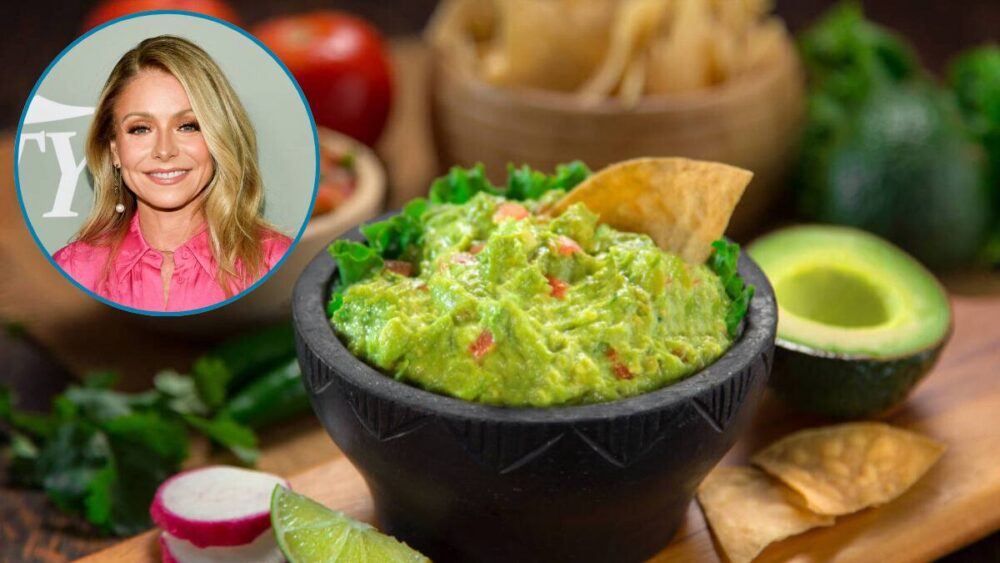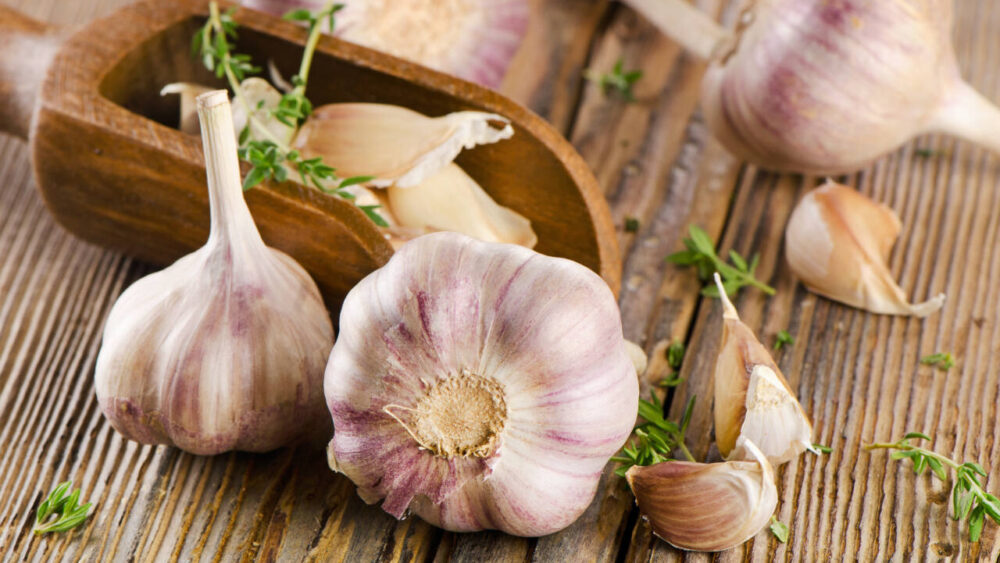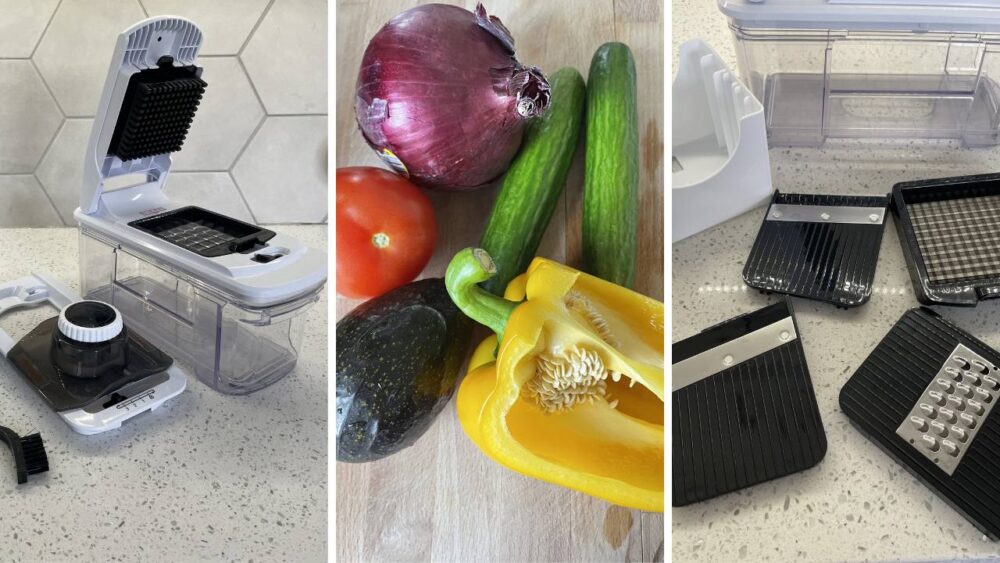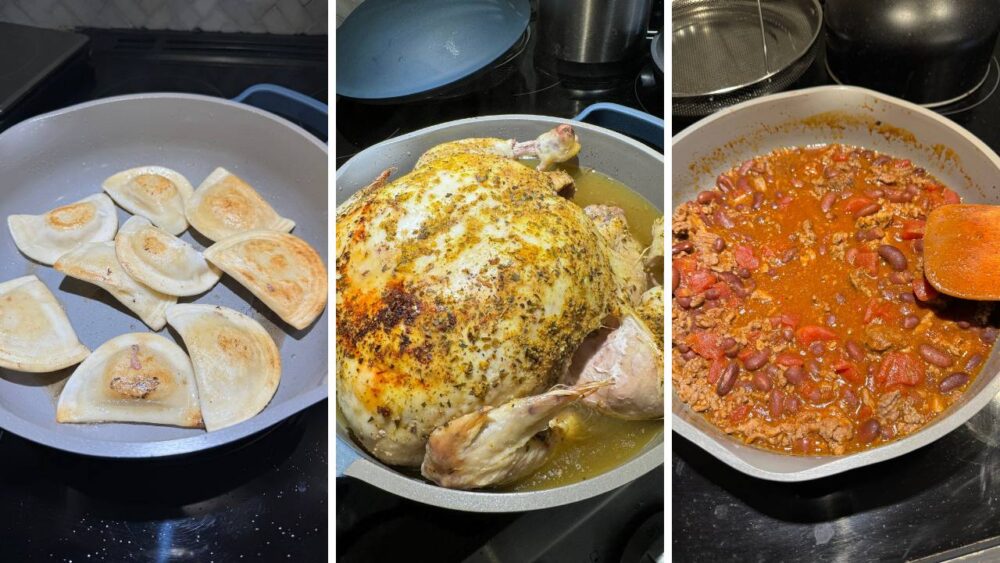Four-ingredient chickpea flatbread is gluten-free, vegan and delicious
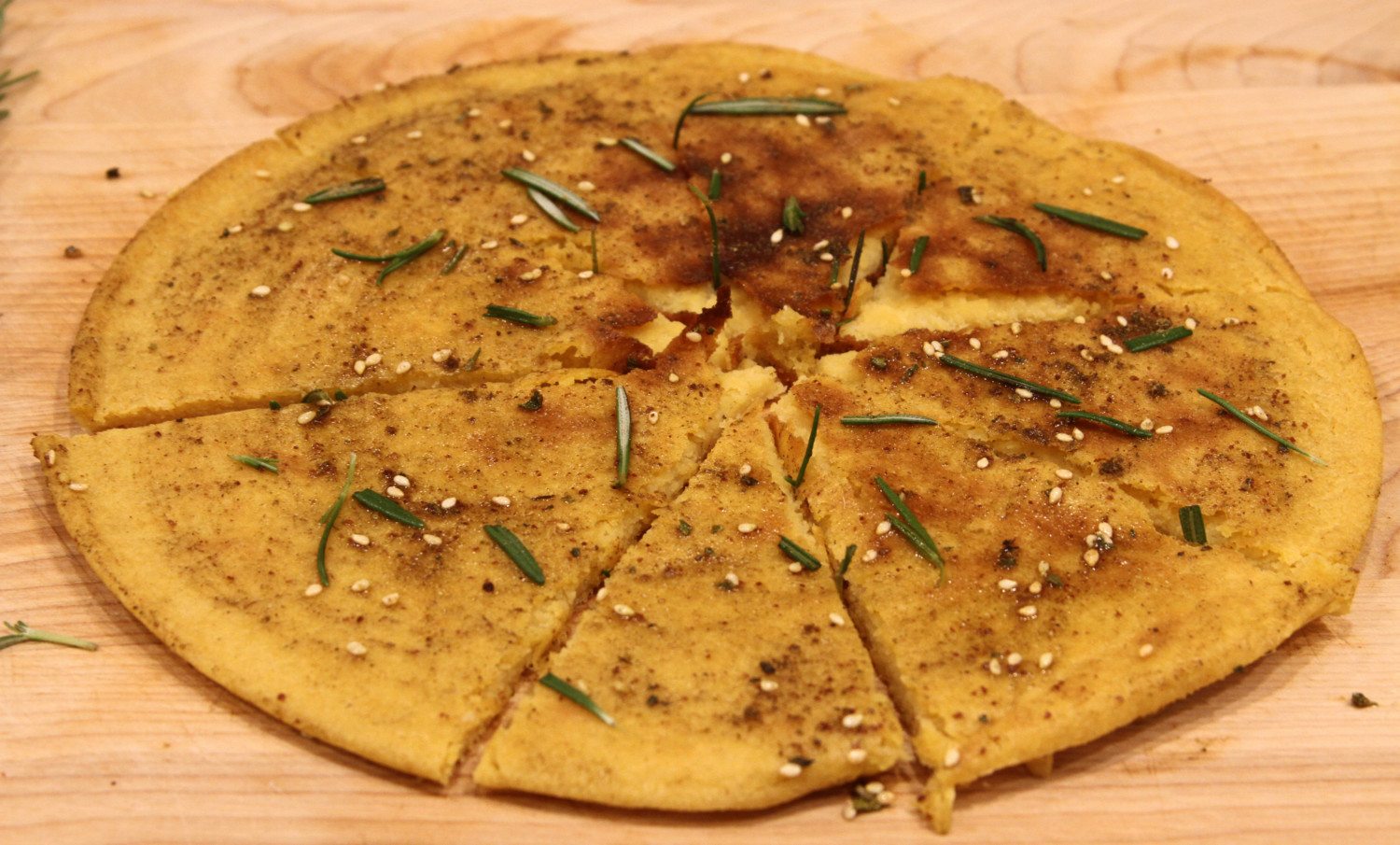
Chickpea (garbanzo bean) flour. Olive oil. Water. Salt. That’s all you need to whip up a simple, savory and delicious flatbread.
This bread is known as Socca, in the south of France. In Italy, it goes by the name farinata. The flatbread is really a type of pancake that originated along the Ligurian coast (Genoa and Nice in particular) and spread around the Mediterranean region.
French street vendors cook it in copper pans over wood-burning fires or stoves. But this The Kitchen recipe says you can make it just as easily with a cast-iron skillet in your oven. So I tried it out.
A note: The variations of this savory pancake all seem to build on chickpea flour, oil and water. The Kitchen’s recipe includes an optional spice called za’atar. That, along with the salt and some pepper and rosemary for seasoning brought my total ingredient count up to seven. Less is more.
And thanks to the rise in popularity of gluten-free foods, it isn’t that hard to find chickpea/garbanzo bean flour today. I found a bag of it along with za’atar at my local equivalent to Whole Foods.
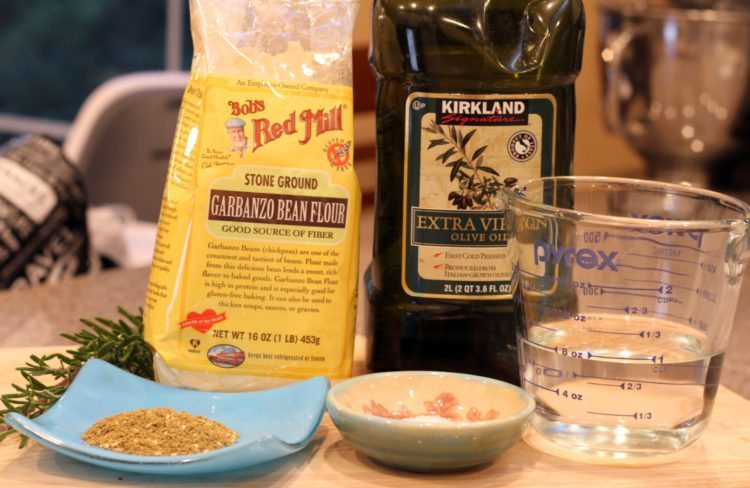
The Simple Flatbread Recipe Breakdown
Whisk flour, water, olive oil and salt together in a bowl.
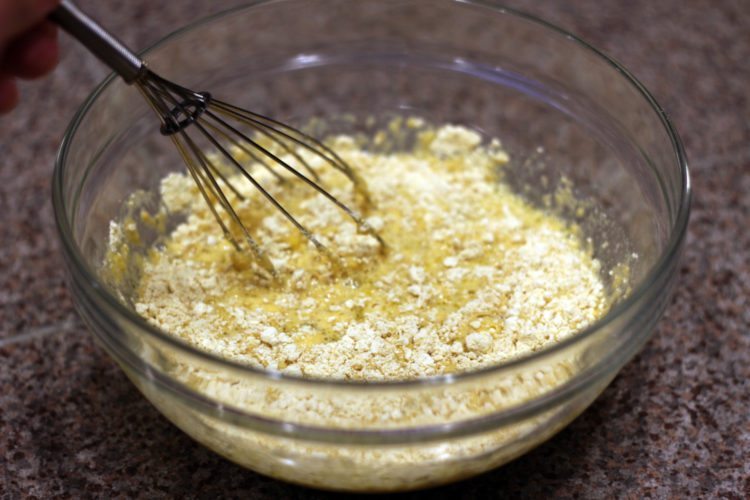
Let it sit for at least 30 minutes. I’ve seen socca/farinata recipes online that say the longer you let the batter sit (sometimes overnight or up to several days), the better the resulting pancake will be. Since this is a yeast-free bread, more time lets the chickpea flour ferment further.
I wanted to try this flatbread sooner rather than later so I stuck to the half hour minimum. Preheat your oven to 450 degrees while you wait. (I used the batter resting time to pack my toddler’s lunch for daycare. Multitasking!)
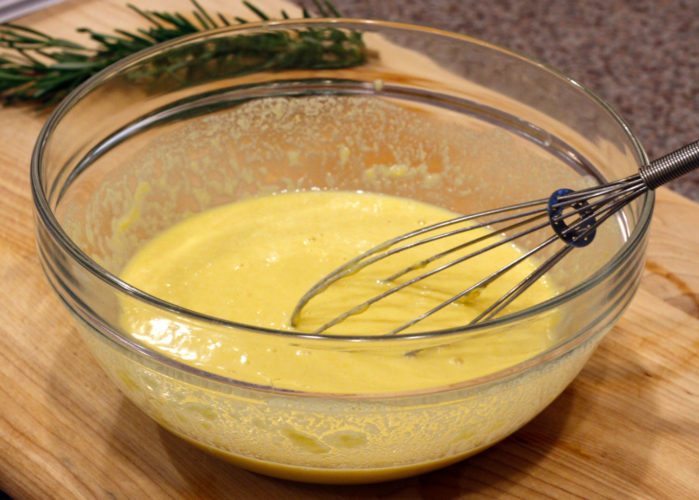
Five minutes prior to adding the batter, switch your oven to broil and put an oiled cast iron skillet inside to preheat. After 5 minutes, remove the hot skillet from the oven, pour your batter inside and return it to the oven to cook under the broiler.
Although The Kitchen’s recipe says the batter will cook in 5-8 minutes, mine took closer to 10 minutes to start crisping. It could have been because of my oven temperature variation or because I first put my broiler on low before boosting it to high. I also ended up taking the flatbread out before the edges started to blacken, mostly because I have bad luck with my broiler turning on me and charring things.
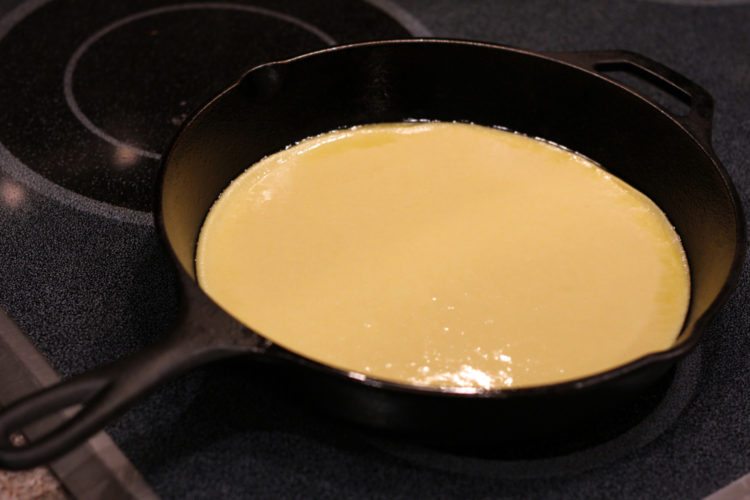
The resulting flatbread was cooked through but still soft and chewy in the center with a crisp outer shell and edges.
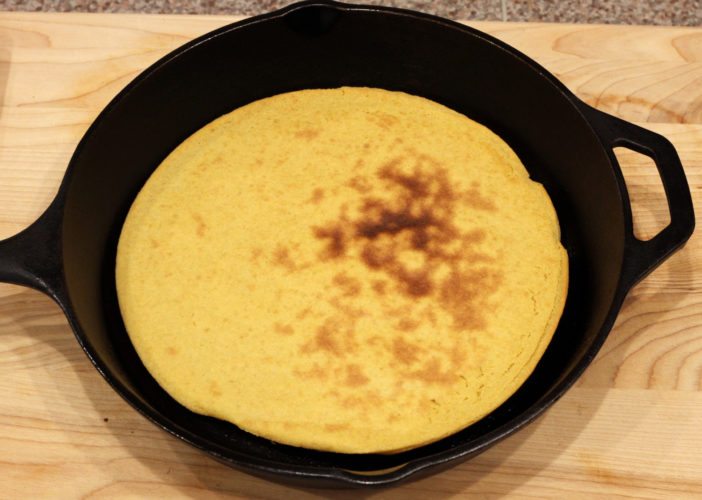
I topped it with olive oil mixed with za’atar and some rosemary we had growing in our garden.
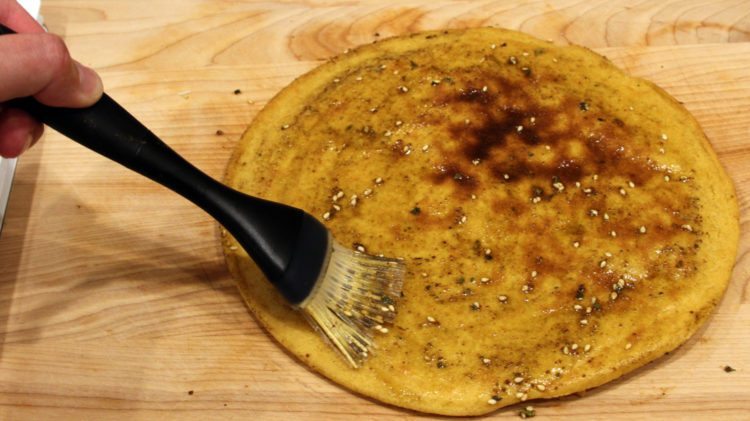
That alone made it savory enough for me, but my husband dipped his pieces in a bit more of the za’atar.
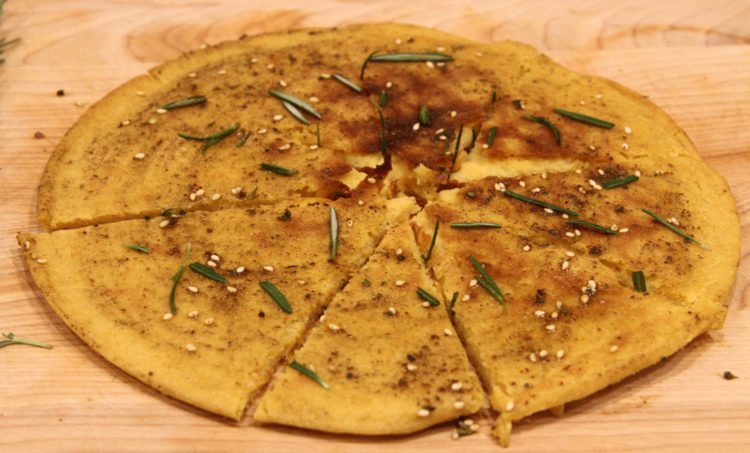
More on Top
We gobbled this tasty snack up straight. But the BBC has some ideas for what you can put on top of the basic chickpea flatbread for some hearty variation. Make it a light meal with a salad and a bottle of wine.
Mark Bittman adds onions and rosemary to the batter in his New York Times take on the recipe. You could even add some syrup or jam to the plain pancake for a sweet version.
But I thought the flatbread was pretty good just with seasoning and olive oil. My taste tester husband agreed.
So the verdict? This recipe is easy to make, tasty to eat, and a high-fiber alternative to gluten-based flatbreads. Socca success!


